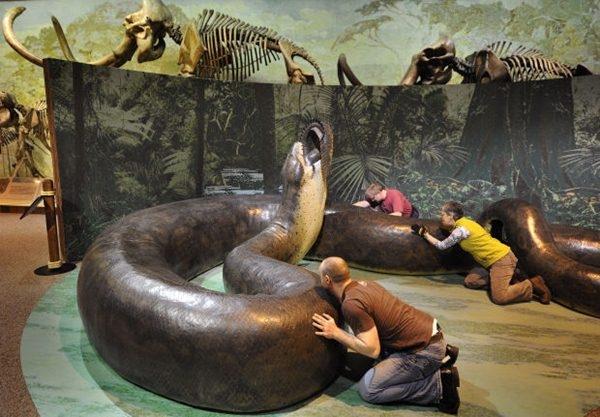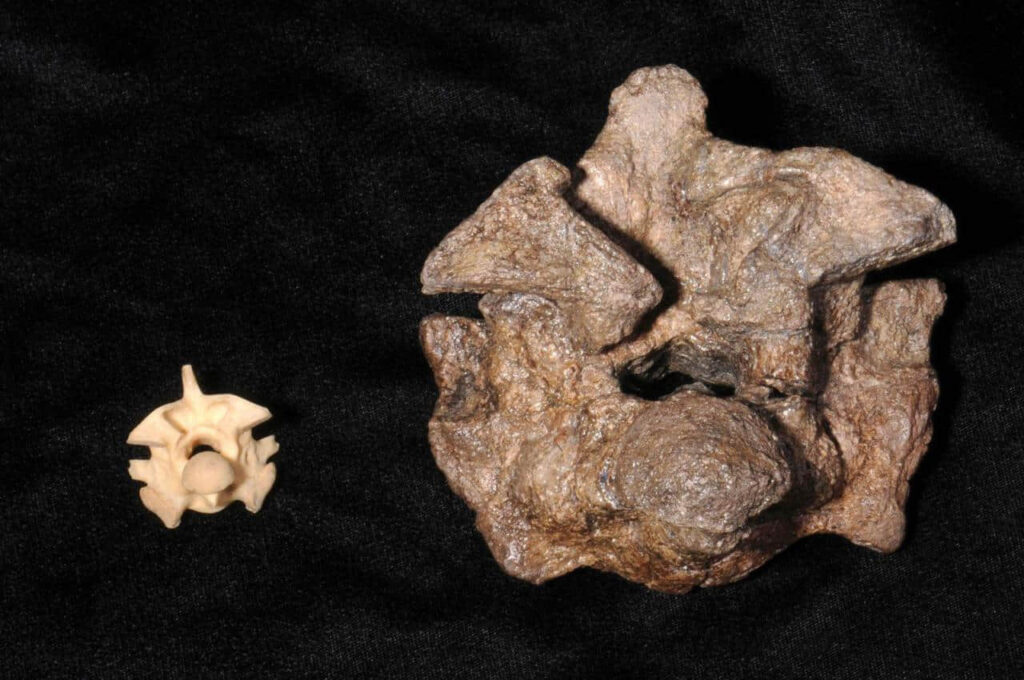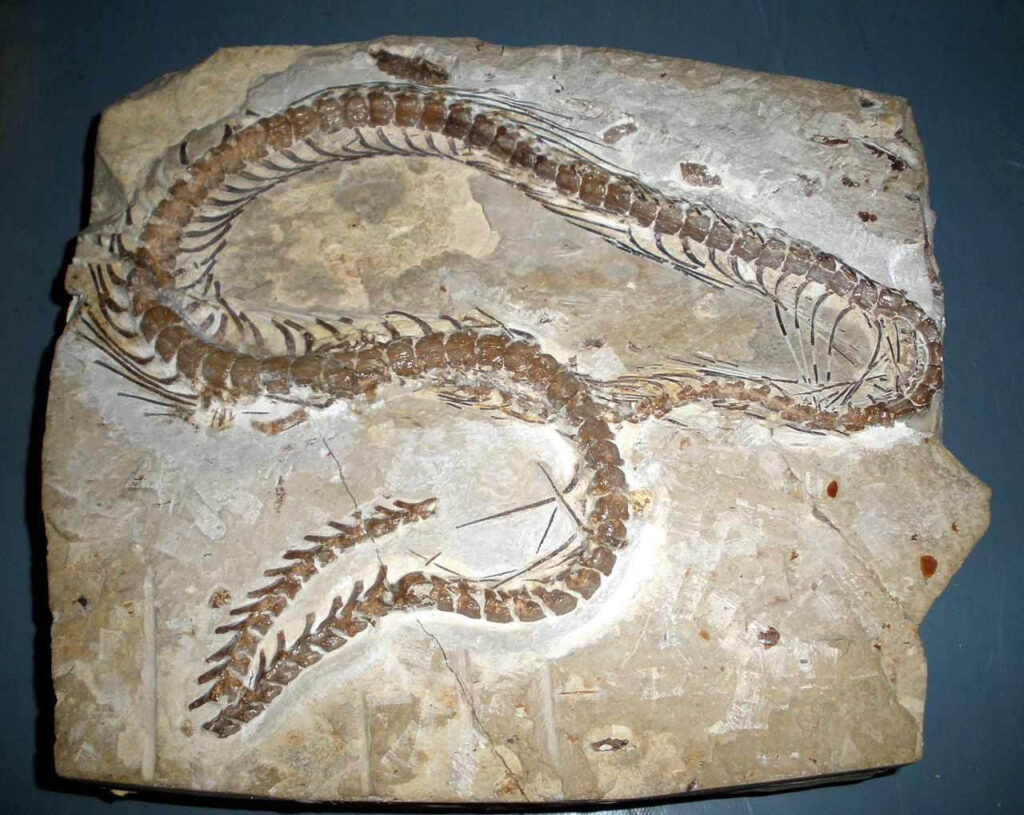This species of snake is called Titanoboa, discovered in South America, with a body length of up to 15 meters and weighing about 2,500 pounds, equivalent to nearly 1,200 kilograms.

It is considered the ruler of the ancient rainforest 60 million years ago.
This snake became the largest meat-eating animal on Earth after the extinction of the dinosaurs.

Its enormous size was influenced by the hot and humid tropical climate at that time. Fossils of Titanoboa were found in Cerrejón, Colombia, and encountering them, humans would have had little chance of survival.

Titanoboa is a genus of snakes that lived around 60 to 58 million years ago, during the Paleocene epoch. The only known species is Titanoboa cerrejonensis, the largest snake ever discovered.

By comparing the size and shape of its fossilized vertebrae with those of modern snake species, researchers estimate that T. cerrejonensis was about 13 meters long, weighed around 1,135 kilograms, and was about 1 meter wide at its thickest point on its body.
The fossils of 28 individuals of T. cerrejonensis were found in coal mines at Cerrejón in northern Colombia in 2009.

Before this discovery, only a few fossilized vertebrate animals from the Paleocene epoch had been found in ancient tropical environments in South America.

This species is related to the giant snakes of South America. The fossils were discovered during an expedition led by an international team of scientists, including Jonathan Bloch, a paleontologist specializing in vertebrates at the University of Florida, and Carlos Jaramillo, a paleobotanist from the Smithsonian Tropical Research Institute in Panama.

Since snakes are cold-blooded animals, this discovery implies that the tropical region, the habitat of these creatures at that time, must have been warmer than previously believed, averaging about 32°C.





